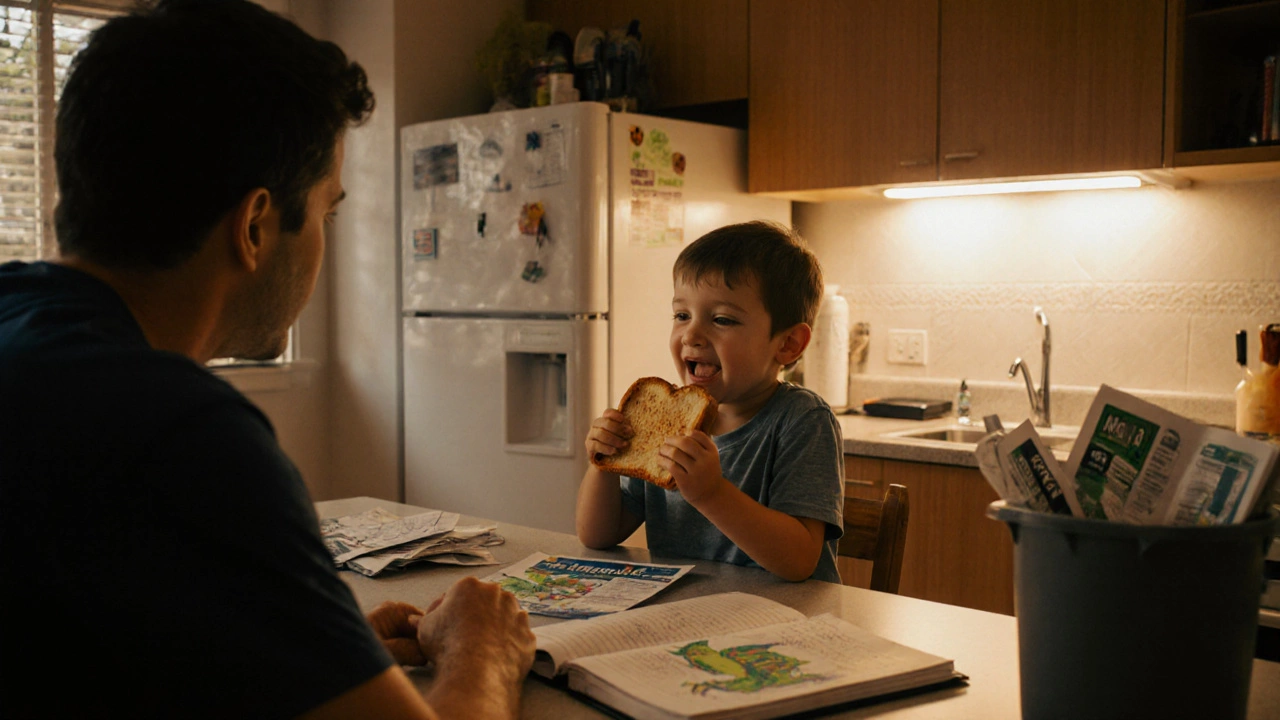How Many Extracurriculars Should Kids Have? A Practical Guide for Parents
 Oct, 27 2025
Oct, 27 2025
Extracurricular Balance Calculator
This tool helps you assess if your child's extracurricular schedule is balanced based on age and signs of overload. Based on research from the University of Melbourne and Australian Institute of Family Studies.
Results
There’s a quiet panic in many Australian homes right now. You’re staring at your child’s planner, a stack of flyers from soccer, piano, robotics, and art classes, and wondering: how many extracurriculars should kids have? It’s not about being the most active family on the block. It’s about making sure your child actually enjoys their time outside school-and doesn’t end up exhausted, overwhelmed, or burned out before they hit puberty.
There’s No Magic Number
Forget the idea that three activities is the golden rule. Or that one is too little. The right number isn’t about quantity-it’s about energy. Look at your child’s daily rhythm. Do they come home from school and collapse on the couch? Do they complain about being tired before bed? Do they skip meals because they’re rushing to the next class? If so, they’re already overbooked.
Most kids between ages 6 and 12 can handle one or two consistent activities per week. That’s it. Not because they’re lazy, but because their brains and bodies are still growing. A 2023 study from the University of Melbourne tracked over 1,200 school-aged children and found those with just one or two structured after-school activities had better sleep, lower stress levels, and higher academic focus than kids with three or more.
What Kind of Activities Matter Most?
Not all activities are created equal. A soccer club that meets twice a week and ends with high-fives and laughter? Great. A piano lesson where your child cries every Sunday because they’re terrified of missing a note? Not so great.
Look for activities that give your child:
- Choice-did they pick it, or did you? Kids who choose their own activities stick with them longer and feel more in control.
- Play-not just training. Even in structured clubs, there should be room for messing around, laughing, and figuring things out on their own.
- Connection-do they have a friend there? A coach who remembers their name? Belonging matters more than medals.
Think of extracurriculars like food: a little variety is good. Too much, and the system shuts down. One physical activity (like swimming or martial arts), one creative outlet (like art or drama), and maybe one academic club (like coding or debate) is a healthy mix for most kids. But if your child picks up guitar and wants to join the school band? That’s one activity, not two.
The Hidden Cost: Family Time
Every activity has a hidden price tag: your time. Driving to soccer practice at 5 p.m., then rushing home to cook dinner, helping with homework, and still trying to have a conversation before bed? That’s not parenting. That’s logistics.
Research from the Australian Institute of Family Studies shows families with too many scheduled activities report less meaningful conversation, fewer shared meals, and lower overall satisfaction with their home life. Kids don’t need perfect schedules-they need presence. A 15-minute chat while making toast after school means more than three hours in a robotics lab if you’re not actually listening.
Ask yourself: Are we doing this for them-or for our own sense of achievement? Are we checking boxes because we think it looks good on a resume? High school applications don’t care if your child did five clubs. They care if your child showed depth, commitment, and genuine interest in one or two.

Signs Your Child Has Too Much
It’s not always obvious. Kids don’t always say, “I’m overwhelmed.” They act out, withdraw, or get sick. Watch for these red flags:
- Regular complaints of headaches or stomachaches before activities
- Difficulty falling asleep or waking up tired
- Sudden loss of interest in things they used to love
- Snapping at siblings or you over small things
- Missing schoolwork or forgetting deadlines because they’re too tired
If you see two or more of these, it’s time to hit pause. Not because you failed-but because your child needs space to breathe.
What About College Applications?
You’re probably thinking: “But what about university? Won’t they need a long list of activities?”
Not really. Top universities in Australia, the US, and the UK aren’t looking for kids who did everything. They’re looking for kids who did something meaningful and stuck with it. A student who led the school’s environmental club for two years, organized a community clean-up, and wrote a proposal adopted by the local council? That’s powerful. A student who did six clubs for six months and dropped them all? That’s noise.
Depth beats breadth every time. One real commitment shows more character than five half-hearted tries.

How to Decide What to Keep
Here’s a simple way to cut the clutter:
- Write down every activity your child is doing right now.
- Ask them: “Which one do you look forward to the most?”
- Ask them: “Which one feels like a chore?”
- Look at your calendar. Are you spending more time driving than your child is spending doing the activity?
- Remove one thing that feels like a chore or a burden.
Don’t remove everything at once. Just one. See how your child reacts. Do they breathe easier? Do they smile more? Do they start talking about their day without being asked?
If yes, you’ve found your answer.
Empty Time Isn’t Waste
There’s a myth that every minute of a child’s day needs to be filled. That’s not true. In fact, unstructured time is one of the most important skills we can give them.
When kids have nothing to do, they learn to entertain themselves. They build forts. They draw. They daydream. They figure out how to fix a broken toy. They talk to their pets. They invent games with their siblings.
These are the moments that build creativity, problem-solving, and emotional resilience. You can’t schedule those. You can only protect them.
Try this: block out one evening a week-just one-as completely unscheduled. No devices. No plans. Just time. See what happens. Chances are, your child will surprise you.
Final Thought: It’s Not About the Activities
How many extracurriculars should kids have? The real answer is: as many as they can handle without losing joy.
It’s not about stacking up trophies or checking off boxes. It’s about raising kids who feel capable, calm, and curious-not drained and defined by their schedules.
Less is more. Not because it’s easier-but because it’s truer.
Is it bad if my child only does one extracurricular?
Not at all. One meaningful activity is better than three that feel like obligations. Many successful adults credit just one childhood passion-whether it was piano, soccer, or coding-as the thing that taught them discipline, joy, or how to stick with something hard. Quality matters more than quantity.
My child wants to do everything. Should I let them?
Let them try one or two at a time-but set a clear end date. Say, “You can try both soccer and art for six weeks, then we’ll talk about which one you want to keep.” This teaches decision-making without overwhelming them. Most kids naturally drop one after a few weeks anyway. That’s okay. It’s part of learning what they truly care about.
What if my child says they’re bored with their activity?
Ask them why. Sometimes boredom is just the “grind phase”-the part before they get good. But if they say they don’t like the coach, feel pressured, or miss playing with friends, it’s time to listen. Boredom isn’t always a sign of quitting-it’s often a sign that something’s off. Don’t push them to stick with it just because you paid for it.
How do I know if an activity is too expensive or time-consuming?
Ask yourself: Is this adding to our family’s stress or reducing it? If you’re skipping meals, missing family dinners, or arguing about transportation, it’s too much. Cost isn’t just money-it’s time, energy, and emotional bandwidth. If the activity leaves you feeling frazzled, it’s not worth it, no matter how prestigious it sounds.
Should I push my child to continue an activity they started?
Only if they’re struggling with a challenge they care about. If they’re quitting because they’re tired, overwhelmed, or unhappy, don’t force it. The lesson isn’t “finish what you start”-it’s “know when to let go.” Kids learn resilience by choosing to keep going when they want to, not when they’re forced to.